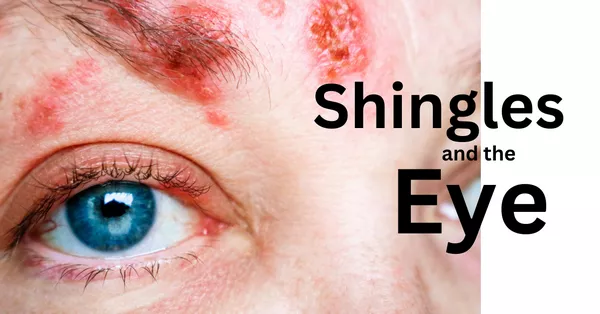Shingles, also known as herpes zoster, is a viral infection caused by the varicella-zoster virus—the same virus that causes chickenpox. While shingles typically manifests as a painful rash on one side of the body, it can also affect the area around the eye, leading to potentially serious complications. Understanding the risks associated with shingles near the eye is crucial for prompt diagnosis and appropriate treatment.
Understanding Shingles Near the Eye
When shingles affects the area around the eye, it is known as herpes zoster ophthalmicus (HZO). This condition occurs when the varicella-zoster virus reactivates in the trigeminal nerve, which supplies sensation to the face and eyes. HZO presents with symptoms similar to those of shingles elsewhere on the body, including a painful rash, itching, and burning sensations. However, when the eye is involved, the potential for complications increases significantly.
Potential Complications
Shingles near the eye can lead to various complications, some of which may have long-lasting effects on vision and overall eye health. These complications include:
1. Ocular Inflammation: The rash associated with HZO can spread to the eyelids, conjunctiva, and cornea, causing inflammation. This inflammation, known as uveitis, can lead to eye redness, pain, and sensitivity to light.
2. Corneal Damage: If the cornea—the clear, dome-shaped surface that covers the front of the eye—is affected by the shingles rash, it can result in corneal ulcers or scarring. This can lead to vision impairment or even permanent vision loss if not promptly treated.
3. Optic Nerve Inflammation: In some cases, shingles near the eye can lead to optic neuritis, which is inflammation of the optic nerve. Optic neuritis can cause vision loss and may require immediate medical attention to prevent further damage.
4. Glaucoma: HZO can increase the risk of developing glaucoma, a condition characterized by increased pressure within the eye. If left untreated, glaucoma can cause irreversible damage to the optic nerve and lead to vision loss.
5. Eye Movement Disorders: Shingles near the eye can affect the muscles that control eye movement, leading to double vision or difficulty moving the eye in certain directions.
Treatment and Management
Prompt diagnosis and appropriate treatment are essential for minimizing the risk of complications associated with shingles near the eye. Treatment typically involves antiviral medications to reduce the severity and duration of the infection, as well as pain management strategies to alleviate discomfort.
In addition to antiviral medications, corticosteroids may be prescribed to reduce inflammation and prevent complications such as optic neuritis and corneal damage. Lubricating eye drops or ointments may also be recommended to soothe the eyes and prevent dryness.
In some cases, more aggressive treatment measures may be necessary, such as injections of antiviral medications directly into the eye or surgical intervention to repair corneal damage or alleviate pressure on the optic nerve.
Prevention Strategies
While shingles near the eye cannot always be prevented, there are steps that individuals can take to reduce their risk of developing the condition:
1. Get Vaccinated: The shingles vaccine, which is recommended for adults aged 50 and older, can significantly reduce the risk of developing shingles and its complications, including HZO.
2. Practice Good Hygiene: Practicing good hygiene, such as washing hands frequently and avoiding touching the eyes, can help prevent the spread of the varicella-zoster virus.
3. Manage Stress: Stress can weaken the immune system and increase the risk of shingles reactivation. Engaging in stress-reducing activities such as exercise, meditation, and yoga may help lower the risk of shingles near the eye.
4. Seek Prompt Treatment: If symptoms of shingles near the eye develop, seeking prompt medical attention is crucial for early diagnosis and treatment. Early intervention can help prevent complications and minimize the impact on vision and eye health.
Conclusion
Shingles near the eye, or herpes zoster ophthalmicus, poses significant risks to vision and eye health. Complications such as corneal damage, optic nerve inflammation, and glaucoma can have lasting effects if not promptly diagnosed and treated. Understanding the potential risks associated with shingles near the eye and taking steps to prevent infection, such as vaccination and good hygiene practices, is essential for maintaining eye health and reducing the likelihood of complications. If symptoms of shingles near the eye develop, seeking prompt medical attention is crucial for optimal outcomes and preserving vision.

























